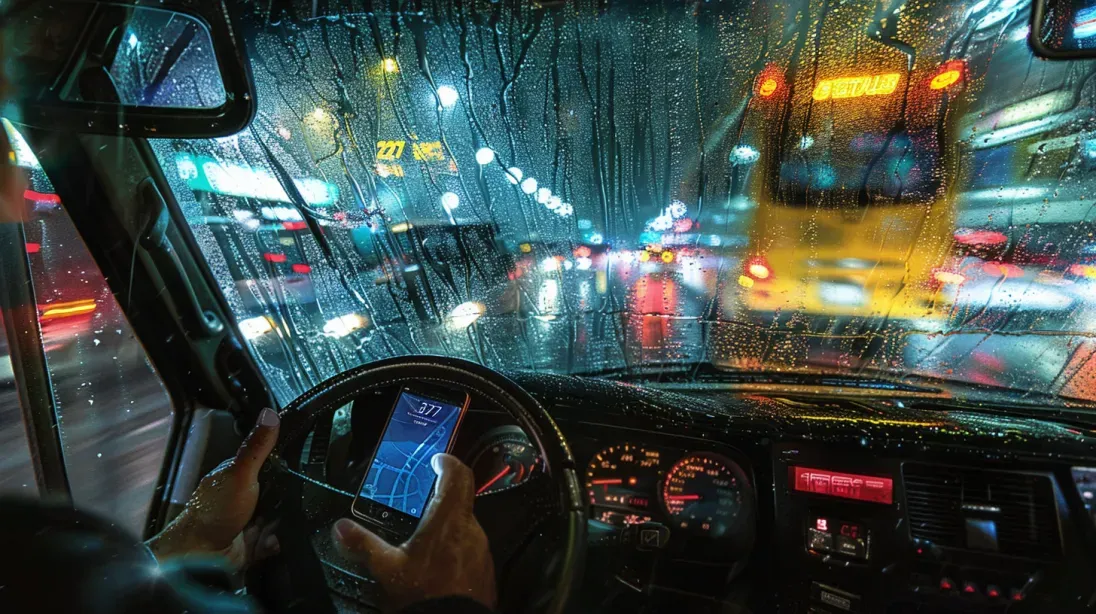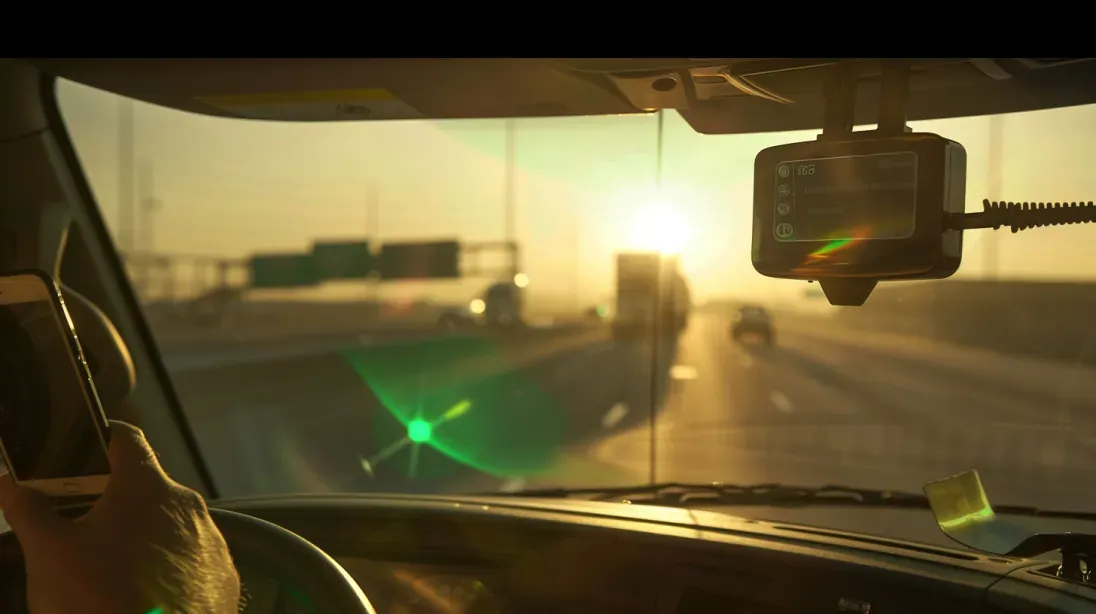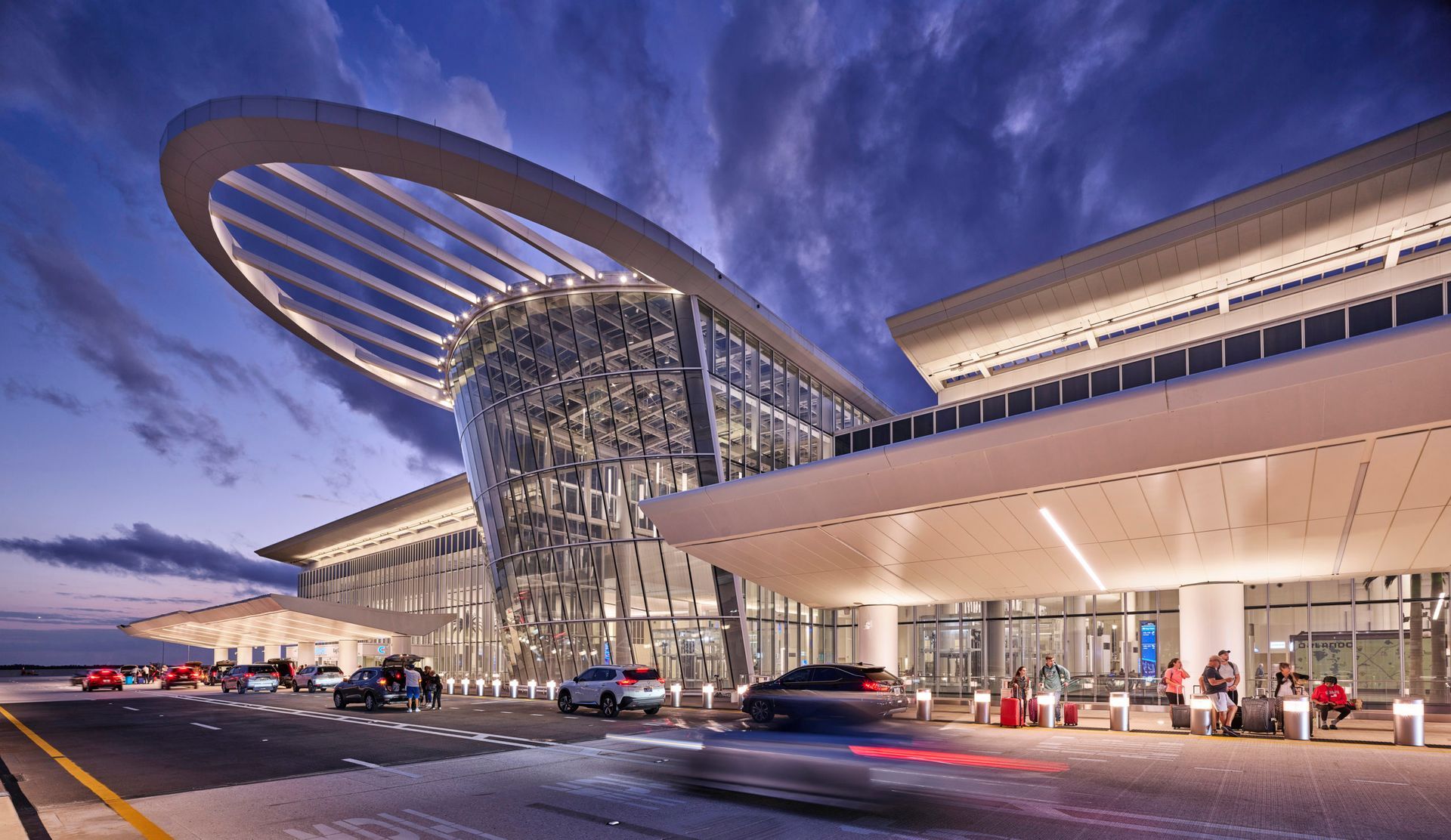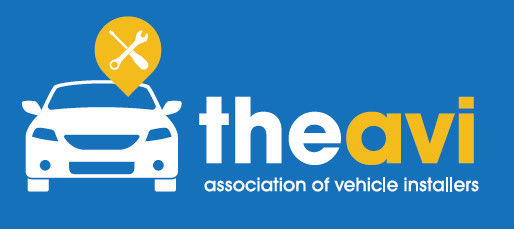01283 533330
The Silent Killer in Fleet Safety: Combating Distracted Driving for a Safer Future
Distracted driving is a growing epidemic, claiming thousands of lives and costing fleets millions every year. Are you prepared to tackle this crisis?

Distracted driving poses a severe threat to your fleet’s survival, with each incident costing over $120,000 and potentially destroying lives. You’re facing a crisis that claims more than 3,000 lives annually on U.S. roads, while 70% of businesses suffer direct financial impacts from these preventable accidents. Your young drivers aged 16-24 face the highest risk, with texting while driving increasing crash probability by 23 times.
Modern technology both contributes to and helps prevent this growing epidemic through monitoring solutions and safety protocols. Understanding the full scope of this silent killer will transform how you protect your fleet’s future.
Key Takeaways
- Distracted driving causes over 3,000 deaths annually and increases crash risk by 23 times compared to focused driving.
- 70% of businesses face financial impact from distracted driving, including increased insurance premiums, legal costs, and productivity losses.
- Mobile devices, dashboard technology, and work-related stress create a perfect storm of distractions for fleet drivers.
- Advanced monitoring technologies and telematics solutions reduce incidents by 73% when implemented properly in fleet operations.
- Companies without clear distracted driving policies face increased liability, reputation damage, and potential loss of business partnerships.
The Rising Threat
Recent statistics paint a grim picture of distracted driving's devastating impact, with over 3,000 U.S. fatalities in 2020 and more than 2,500 distraction-related accidents reported by ROSPA in 2019.
You’ll find the risk of a crash skyrockets by 23 times when drivers use mobile phones behind the wheel, a stark reality that’s affecting 70% of businesses through accidents and financial losses.
Your fleet’s drivers now face an unprecedented array of distractions, from smartphones and navigation systems to digital displays, creating a perfect storm of road safety hazards.
Statistics Tell Alarming Story
Examining the latest data on distracted driving reveals a grim reality that fleet managers can’t ignore. With 3,142 fatalities in 2020 alone, distracted driving incidents have become a critical concern that’s driving up insurance premiums and putting lives at risk. While mobile phone use remains a primary culprit, causing 516 collisions in the UK, modern technology help systems can paradoxically add to the problem.
| Category | Impact |
|---|---|
| Annual Injuries | 391,000 |
| Texting Risk | 23x more likely to crash |
| Age Risk | 16-24 years most vulnerable |
You’ll find the numbers particularly troubling when considering that texting while driving increases crash risk by 23 times compared to focused driving. Your youngest drivers, aged 16-24, face the highest risk, as they’re more likely to engage in distracted behaviors behind the wheel. Even more concerning is that in-vehicle technology, designed to assist drivers, often demands high levels of attention that can compromise safety.
These statistics underscore why you need extensive strategies to combat this growing crisis in your fleet operations.
Modern Distractions Multiply Risks
The landscape of driver distractions has evolved far beyond traditional hazards like adjusting the radio or eating behind the wheel.
Today’s fleet drivers face an unprecedented array of digital distractions that dramatically increase their risk of accidents and drive up insurance premiums.
You’re now dealing with a complex web of modern distractions that can be 23 times more dangerous than focused driving.
To understand the scope of these mounting risks, consider these essential factors:
- Mobile devices have become the leading cause of distracted driving incidents, with texting and app usage creating dangerous situations that often result in costly crashes.
- Dashboard technology and navigation systems, while helpful, can pull drivers’ attention away from the road at critical moments.
- Work-related stress and cognitive distractions impact driver focus, even with both hands on the wheel.
- Social media notifications and email alerts create constant temptations that dash cams often capture.
To reduce distracted driving in your fleet, you’ll need a thorough approach that addresses both technological and human factors.
The financial impact is clear - 49% of businesses face direct costs from distracted driving incidents, making this an urgent priority for fleet managers.
Real Costs Beyond Vehicle Damage
You’ll find distracted driving’s hidden costs extend far beyond damaged vehicles, with 40% of companies reporting severe productivity losses when accidents sideline drivers and disrupt delivery schedules.
Your legal exposure skyrockets when distracted drivers cause accidents, leading to costly lawsuits and potential punitive damages that can devastate your bottom line.
These financial risks multiply when you consider that 70% of businesses have already been impacted by distracted driving incidents, making it essential to address this issue before it affects your operations.

Lost Productivity Impact
Beyond crashed vehicles and repair bills lies a more insidious cost of distracted driving that’s crippling fleet operations nationwide. When your drivers succumb to distractions, you’ll face a cascade of productivity losses that directly impact your bottom line.
Research shows that 40% of businesses experience significant operational disruptions due to distracted driving incidents, creating a ripple effect throughout their organisation.
You’re not just losing time and money from vehicle downtime - you’re facing a complex web of challenges that affect your entire operation.
Here’s how distracted driving decimates your productivity:
- Service disruptions lead to delayed projects and lost contracts, as you can’t meet customer commitments.
- Legal liabilities and court proceedings pull key personnel away from their core responsibilities.
- Insurance claims processing and paperwork consume valuable administrative resources.
- Vehicle repairs and replacements create scheduling nightmares that impact multiple departments.
The financial costs are staggering, with 49% of businesses reporting direct impacts from distracted driving incidents.
When you factor in higher insurance premiums, regulatory fines, and lost business opportunities, the productivity drain becomes even more apparent.
This silent productivity killer demands immediate attention before it paralyses your operations.
Legal Liability Exposure
Mounting legal bills and devastating court settlements loom over fleet operators who ignore distracted driving risks. Your company faces extensive legal liabilities when drivers engage in distracted behaviors behind the wheel. You’re not just risking hefty fines and penalty points - you’re exposing your organisation to potentially ruinous civil lawsuits.
| Legal Consequence | Individual Impact | Company Impact |
|---|---|---|
| Traffic Violations | Up to 6 points | Fleet record damage |
| Monetary Fines | £200+ per incident | Insurance increases |
| License Status | Potential suspension | Driver shortage |
| Criminal Charges | Personal record | Corporate liability |
| Civil Litigation | Individual suits | Company settlements |
When your drivers cause accidents through distraction, you’ll face increased insurance premiums that can persist for years. Insurance companies scrutinise these incidents carefully, often resulting in coverage difficulties and higher long-term costs. You can’t afford to ignore the financial impact of distracted driving on your operation’s bottom line. The combination of legal penalties, settlement costs, and insurance implications creates a perfect storm of financial exposure that can threaten your fleet’s sustainability.
Technology’s Role in Prevention
Modern monitoring apps and telematics systems let you track driver behavior in real-time, identifying risky distractions before they lead to accidents.
You’ll find that driver-facing dash cams paired with AI technology can instantly detect signs of distraction, from phone use to drowsiness, and alert your drivers before incidents occur.
Monitoring Apps Save Lives
Three powerful monitoring technologies are revolutionising how fleet operators combat distracted driving. Advanced telematics solutions, including dual-facing dash cams, now give you unprecedented visibility into driver behavior, while monitoring apps actively restrict phone functionality to enhance road safety.
When combined with Driver Monitoring Systems (DMS), you’ll have a thorough defense against distraction-related incidents.
These technologies work together to protect your fleet through:
- Real-time alerts that notify you when drivers show signs of distraction or fatigue
- Automated phone restrictions that prevent dangerous mobile device usage while vehicles are in motion
- Data collection that enables personalised training programs based on specific driver behaviors
- Continuous performance monitoring that helps you identify and address risk patterns before accidents occur
With 78% of fleet operators already utilising these technologies and 73% reporting reduced instances of distracted driving, the evidence is clear: monitoring solutions work.
You’ll not only protect your drivers and assets but also create a data-driven culture of safety that delivers measurable results. By implementing these monitoring technologies, you’re taking a proactive stance against one of fleet management’s most pressing challenges.

Smart Alerts Prevent Accidents
Building on the power of monitoring technologies, smart alert systems represent the next evolution in preventing distracted driving incidents.
These intelligent systems, powered by advanced telematics and driver monitoring systems, can detect risky behaviors in real-time and immediately notify drivers before situations become dangerous.
You’ll find that smart alerts are remarkably effective at enhancing road safety, with fleets reporting a 73% reduction in distracted driving incidents after implementation. Driver monitoring systems continuously track alertness levels and identify signs of distraction, giving you vital warnings before accidents occur. This proactive approach doesn’t just save lives—it also protects your bottom line through reduced insurance premiums.
When you integrate smart alerts into your fleet operations, you’re creating a thorough safety net that transforms driver behavior. The system’s continuous evaluation and feedback loop helps establish a stronger safety culture, encouraging drivers to stay focused on the road.
With real-time notifications addressing issues like phone use and cognitive distractions, your drivers remain accountable and alert throughout their routes, greatly reducing the risk of accidents caused by distracted driving.
Building a Safety-First Culture
You’ll find that establishing a safety-first mindset starts with clear incentives and recognition for drivers who maintain excellent safety records.
Your leadership team needs to walk the talk by following and championing safety protocols, creating a trickle-down effect throughout the organisation.
When you consistently reward safe driving behaviors and demonstrate unwavering commitment to safety standards, you’ll cultivate a culture where drivers naturally prioritise focused, distraction-free operations.
Reward Safe Driving Behaviors
Through strategic recognition and rewards, fleet managers can effectively combat distracted driving while fostering a safety-first culture. By implementing a structured rewards program, you’ll see a measurable 20% reduction in accidents while boosting employee morale by 15%.
This proactive approach not only reduces insurance premiums but also creates a positive user experience for your drivers.
Your rewards program should focus on these key elements:
- Regular performance tracking with immediate feedback on safe driving behaviors
- Monthly or quarterly recognition ceremonies to celebrate drivers with exemplary safety records
- Tangible incentives like bonuses or extra time off for maintaining accident-free periods
- Clear metrics that measure and reward reductions in distracted driving incidents
The data shows that fleets with established reward systems experience 34% fewer distracted driving accidents compared to those without such programs.
You’ll find that consistent recognition of safe driving practices creates lasting behavioral changes among your drivers. By investing in rewards and recognition, you’re not just reducing accidents - you’re building a sustainable culture where safety becomes second nature to your team.
Lead By Safety Example
Within successful fleet operations, a safety-first culture starts at the top and cascades throughout the organisation.
When leadership demonstrates an unwavering commitment to safety, it sets a powerful example that resonates with every driver in your fleet.
Just as websites use cookies to track behavior, your actions as a leader are constantly monitored and replicated by your team.
You’ll need to establish clear expectations, similar to how a GDPR cookie notice clearly communicates data usage. Keep your hands off the wheel of micromanagement, but maintain firm policies against distracted driving.
Data stored in your browser can be deleted, but when distracted driving leads to an accident, the consequences are permanent. That’s why 73% of fleet operators who implement strict mobile phone policies see improved safety outcomes.
Make safety meetings interactive and meaningful, incorporating real-world examples and data from your fleet’s telematics systems. When drivers see that 78% of fleets use advanced monitoring solutions, they understand the seriousness of the issue.
Recognise and celebrate drivers who consistently demonstrate safe behaviors, as this reinforces your commitment to creating a culture where safety isn’t just a priority—it’s a core value.
Legal and Insurance Implications
You’ll face steep increases in insurance premiums if your fleet drivers cause accidents due to distracted driving, with many insurers now specifically targeting phone-related incidents for higher rates.
Your company’s liability exposure multiplies when you don’t maintain clear distracted driving policies, as courts often view this negligence harshly in accident cases.
Your business could end up paying considerably more in both direct costs and legal settlements if you don’t address these risks proactively through documented safety protocols and enforcement measures.
Rising Premium Costs
Managing distracted driving infractions has become a costly burden for fleet operators, with insurance premiums skyrocketing after each incident. When your drivers engage in distracted behaviors, particularly smartphone use, you’ll face severe financial consequences that extend far beyond initial fines.
Your insurance costs will multiply through several channels:
- Direct premium increases following distracted driving incidents, as insurers view these violations as high-risk behaviors that warrant substantial rate adjustments.
- Loss of coverage eligibility if multiple incidents occur, forcing you to seek more expensive insurance alternatives.
- Additional surcharges applied to your fleet policy when claims involve distracted driving, often resulting in long-term premium implications.
- Potential requirement for higher excess payments on future claims, further straining your operational budget.
You’ll need to take into account that fines can range from £200 to £2,500 per offense, depending on the vehicle type and violation severity.
What’s more concerning is that your insurance coverage might become invalid if distracted driving is proven, leaving you exposed to significant financial liability.
This combination of rising premiums and potential coverage gaps creates a compelling case for implementing strict distraction prevention measures across your fleet.
Liability Exposure Risks
Three critical liability risks emerge when your drivers engage in distracted behavior behind the wheel.
First, your company faces severe legal consequences, including potential criminal charges if accidents occur due to smartphone use while driving. You’ll need to deal with both civil litigation and regulatory penalties, which can devastate your operation’s financial stability.
Second, you’re exposing your business to substantial insurance complications. When your drivers violate distracted driving laws, they’ll accumulate points on their licenses and incur fines - like the UK’s £200 penalty and six-point system. These violations trigger increased scrutiny from insurance providers, leading to higher premiums and more challenging claim processes for your entire fleet.
Third, you’re risking your company’s reputation and operational continuity. When distracted driving incidents occur, you’ll face not just immediate costs but also long-term consequences.
Insurance companies will examine these cases more thoroughly, potentially resulting in claim denials or premium hikes. Additionally, your business reputation could suffer irreparable damage, leading to lost contracts and reduced market confidence.
These combined factors create a complex web of liability that can threaten your fleet’s survival.
Frequently Asked Questions
What Is the Biggest Culprit of Distracted Driving?
While you might think eating or daydreaming tops the list, your mobile phone is actually the #1 culprit of distracted driving. It’s responsible for countless accidents and increases your crash risk 23 times.
What Is the Catch Phrase for Distracted Driving?
“Stay Alive, Don’t Text and Drive” is your most powerful catchphrase for distracted driving awareness. It’s direct, memorable, and emphasizes the life-or-death consequences of using your phone while driving.
What Are 5 Precautions You Can Do to Avoid Distracted Driving?
You can avoid distracted driving by turning off your phone, using hands-free devices, setting GPS before driving, pulling over for essential tasks, and staying focused on the road without eating or multitasking.
What Is the Greatest Cause of Distracted Driving Incidents?
With texting increasing crash risk by 23 times, mobile phone use is the leading cause of distracted driving incidents. You’ll find it’s the most dangerous distraction that drivers face on today’s roads.
Conclusion
When it comes to life’s little driving mishaps, you can’t afford to let your team take their eyes off the prize. While modern conveniences might tempt your drivers to multitask, implementing smart solutions and fostering a safety-focused environment will keep your fleet running smoothly.
By taking action today, you’re not just avoiding unwanted road incidents—you’re investing in your company’s future and your drivers’ well-being.
We're great at what we do...
Manufacturers Warranty
All products we use are of the highest quality and come with a manufacturers warranty.
Installation Warranty
Out of Hours Service
AVI Accredited
All our installers are AVI accredited and therefore you can be assured of the highest quality fit every time.
Brands we work with...
Contact info
T: 01283 533330
SmartFits Installations Limited
4 Eastgate Business Centre,
Eastern Avenue, Burton.
DE13 0AT
All Rights Reserved | Smartfits | Terms & Conditions










